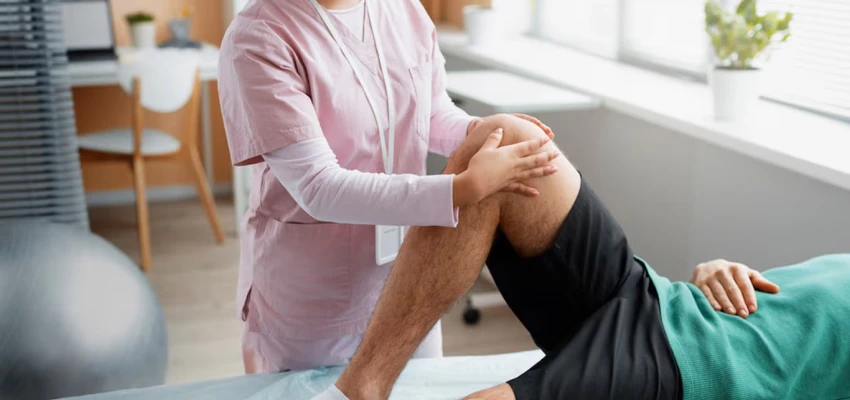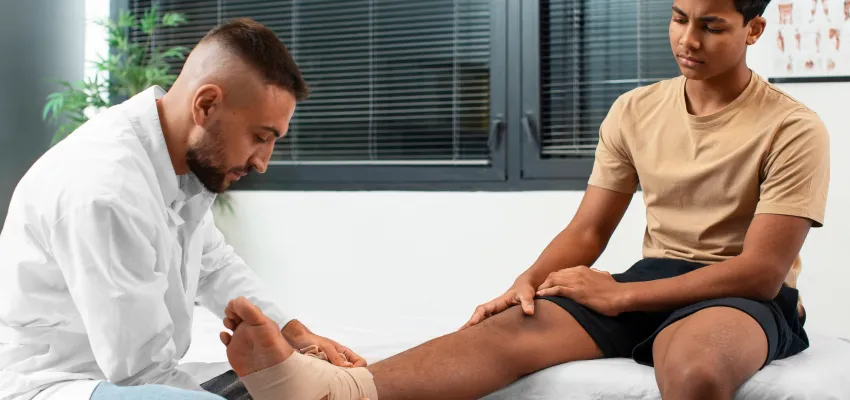Tips to Avoid Knee Replacement: How to Protect Your Knees Naturally

Strengthen your joints, reduce pain, and delay or avoid surgery altogether
Knee pain is one of the most common orthopedic complaints, affecting people of all ages — from athletes to office workers to seniors. And when knee pain becomes chronic or debilitating, the thought of knee replacement surgery often enters the conversation.
While knee replacements can dramatically improve quality of life in severe cases, many orthopedic experts emphasize that surgery should be the last resort, not the first step.
The good news? With the right lifestyle changes, many people can prevent, delay, or completely avoid knee replacement — by managing pain, improving function, and protecting the joint naturally.
Here are 7 expert-backed strategies to help preserve your knee health and stay active, mobile, and surgery-free.
1. Strengthen the Muscles Around Your Knees
“Strong muscles = less pressure on your joints.”
Your knees absorb a lot of stress with every step, squat, or jump. But your muscles — especially the quadriceps, hamstrings, glutes, and calves — act as natural shock absorbers. When they're strong, they reduce wear and tear on the knee joint.
✔️ Try:
- Wall sits, leg presses, glute bridges
- Resistance band hamstring curls
- Step-ups and mini-squats (with proper form)
⚠️ Caution: Avoid high-impact or deep bending exercises if you have pain. Always build strength gradually with guidance from a physiotherapist.
2. ⚖️ Maintain a Healthy Weight
“Every extra pound adds 4 pounds of pressure on your knees.”
Being overweight or obese is one of the biggest risk factors for knee osteoarthritis and eventual joint replacement. Shedding even a small amount of weight can dramatically reduce joint pain and inflammation.
✔️ How it helps:
- Decreases the load on your knee with every step
- Reduces inflammation (fat tissue produces inflammatory cytokines)
- Improves joint alignment and mobility
🥗 Tip: Pair strength training with a Mediterranean or anti-inflammatory diet for joint-friendly weight loss.
3. Improve Flexibility & Mobility
“A stiff joint is a stressed joint.”
Tight muscles — especially in the hips, calves, hamstrings, and quads — can alter your movement patterns, putting excess strain on your knees.
✔️ Do:
- Daily mobility work (leg swings, foam rolling, yoga)
- Gentle stretches post-exercise
- Dynamic warm-ups before activity
🔄 Balanced mobility helps your knees move efficiently and reduces compensatory strain on ligaments and cartilage.
4. Use Physical Therapy & Rehab — Even Before You Need It
“Prehab is the new rehab.”
Physiotherapists can assess your movement patterns, gait, joint alignment, and muscle imbalances — and help you correct them before they become chronic problems.
✔️ Benefits:
- Customized strength and flexibility plans
- Pain management through manual therapy
- Joint unloading strategies (e.g., bracing or taping)
🎯 Consistent physiotherapy can delay or even eliminate the need for surgery in many moderate arthritis cases.
5. 💊 Manage Inflammation with Nutrition & Supplements
“You can't out-exercise chronic inflammation.”
Knee pain is often caused or worsened by inflammation in the joint, especially in conditions like osteoarthritis. Controlling inflammation systemically can reduce pain and slow joint degeneration.
✔️ Eat more of:
- Fatty fish (omega-3s)
- Turmeric, ginger, and green tea
- Leafy greens, berries, nuts
💊 Consider:
- Glucosamine + Chondroitin: Supports cartilage health
- Collagen peptides: May improve joint elasticity
- Vitamin D + Calcium: Supports bone and joint strength
🚫 Avoid: Excess sugar, processed meats, trans fats — all known to trigger inflammation.
6. Choose Joint-Friendly Movements
“Keep moving — but do it smart.”
While rest may feel instinctive during a flare-up, too much inactivity can actually worsen joint stiffness. The key is to stay active with low-impact exercises that strengthen the knee without stressing it.
✔️ Best options:
- Swimming or aqua therapy
- Cycling or stationary bike
- Elliptical trainer
- Tai Chi and walking on even surfaces
⛔ Avoid high-impact activities like running, jumping, or deep lunges without guidance.
7. 👟 Use Proper Footwear & Joint Support
“Good movement starts at the ground up.”
Poor footwear or lack of arch support can change your gait and increase stress on your knees. The same goes for ignoring alignment issues like flat feet or leg length discrepancies.
✔️ Tips:
- Choose cushioned, arch-supportive shoes for walking or training
- Consider custom orthotics if recommended
- Use knee braces or sleeves during flare-ups or workouts for added stability
👣 Consult a podiatrist or physiotherapist if you notice uneven shoe wear or chronic foot/knee discomfort.
🧠 Bonus: Know When to See a Specialist
If your knee pain:
- Lasts longer than 2–3 weeks
- Worsens with movement
- Causes swelling, instability, or limits daily activity
👉 It's time to see an orthopedic doctor or joint specialist. Early intervention may help you avoid surgery altogether with injections, bracing, or minimally invasive therapies.
🏁 Final Thoughts
While knee replacement can be life-changing for severe joint damage, many people can delay or avoid surgery completely by taking proactive steps to protect and strengthen their knees.
Start with small, consistent habits:
- Move more, sit less
- Train smart, not just hard
- Eat to reduce inflammation
- Listen to your body, and seek expert help early
Your knees were built to last — if you take care of them.
✔️ Quick Summary: Tips to Avoid Knee Replacement
- Build strength in surrounding muscles
- Maintain a healthy weight
- Improve flexibility and mobility
- Use physiotherapy proactively
- Reduce inflammation through diet and supplements
- Choose joint-friendly exercises
- Wear proper footwear and use joint support

